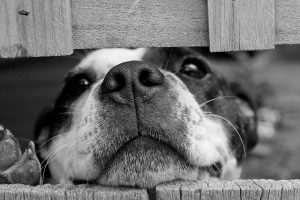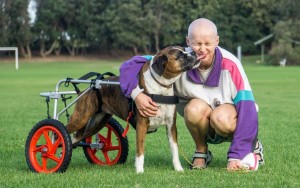Creating a Normal Environment for Your Disabled Pet
 Most people get teary-eyed and upset when they hear stories about a disabled dog or cat. However, such emotional reactions will most probably go over the head of the afflicted pet. Most animals are incapable of feeling self-pity, and cheerfully adapt and accept any changes in their circumstances. That is, unless their owners consistently treat them with pity.
Most people get teary-eyed and upset when they hear stories about a disabled dog or cat. However, such emotional reactions will most probably go over the head of the afflicted pet. Most animals are incapable of feeling self-pity, and cheerfully adapt and accept any changes in their circumstances. That is, unless their owners consistently treat them with pity.
Pets are quick to pick up their owner’s mood, and may start feeling anxious as a result. The best thing you can do for your disabled pet is to stop projecting your own feelings and start creating a normal environment for your pet. Disabled pets are capable of living long, happy lives if you give them half a chance.
That doesn’t mean you will not have to give them special care, however. Here are some quick tips for living with your disabled pet.
Sight impaired pets
Blindness in pets is not as devastating to them as they are for people that used to have their sight. Most people forget that dogs, particularly, rely largely on their sense of smell, so losing their sight is not all that debilitating. You may not even know they’re blind for a long time! Cats do use their sight much more, but they too can adapt to its loss if you make it easy for them to do so.
- Reinforce their sense of security by talking to them; the sound of your voice assures them
- Help them use and develop their sense of smell more by using attractive-smelling treats and toys to keep them alert
- Make a point of keeping areas they frequent free of obstacles
- Lead them around furniture and rooms to familiarize them with the layout and dimensions
- Encourage them to socialize with other pets under controlled conditions until they are more comfortable with their sightlessness
Hearing-impaired pets
Most pets that were not born deaf have good hearing, so the loss of it does have a significant effect on their lives. You will have to make some changes to your communication and routines to cope with a loss of hearing.
- Start practicing hand signals and touch to communicate with your pet as spoken commands will no longer work
- Make eye contact frequently so your pet will start picking up on these non-verbal signals
- Avoid startling your pet by approaching them with a firm step so they can feel your approach
- Use a light to get their attention at night and keep some light available to give them a sense of security
Mobility-challenged pets
Loss of mobility presents some major challenges for both you and your pet. Mobility impairment renders your pet completely dependent on you, even if the situation is temporary. To create a normal environment order for your pet, you need to make some changes to your daily lives.
- Get a specialist to give your pet a complete check-up and ask for long-term care recommendations
- Keep your pet from becoming anxious by keeping to a regular schedule for daily activities
- Give them more frequent baths if they are incontinent or cannot move quickly enough to take care of business on their own
- Find out how to express the bowels of your pet to make life much easier for both of you
- Make a point of regularly checking your pet for sores and wounds especially in the afflicted limbs as mobility-impaired pets can get some nasty injuries without knowing it by dragging their useless limbs around; this can lead to serious infections if not treated
- If your budget allows it, you might try acupuncture or massage for your pet to improve mobility, especially if they are recovering from surgery
- Continue walking your pet to give them a chance to socialize and get some outdoor time
- Seek some support and advice from pet owners in your same situation; you just might get some great tips
Mobility aids are also a great way to create a sense of normalcy for your disabled pet. Adjustable wheelchairs, for instance, are available for all types of dogs provided they have some mobility in their front legs and otherwise healthy. Giving them the ability to get around on their own will do wonders with their well-being and physical health.
Check out these dogs in wheelchairs videos for inspiration.
Conclusion
Your disabled pet is capable of living long and happy lives despite their limitations given half a chance. While creating a normal environment for your disabled pet may requires a significant amount of time and resources at first, it will be worth it in the end.
